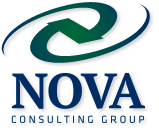Strategy execution for some is a challenge. Navigating the gap between the “strategist” on the hill and those tasked with strategy execution is full of potholes.
In their ground breaking research with over 1000 companies, government agencies and non-profits in 50 countries, Gary L. Neilson, Karla L. Martin, and Elizabeth Powers discovered that “employees at three out of every five companies rated their organization weak at execution”
As they point out, “execution is the result of thousands of decisions made every day by employees acting according to the information they have and their own self-interest.” To help companies better execute their strategies, Neilson, Martin and Powers, identified four building blocks company leaders can use to influence those decisions. They are:
- Clarifying Decision Rights
- Designing Information Flows
- Motivators
- Structure
(Note: Decision Rights and Information Flow were found to be twice as effective as Motivators and Structure)
In 2003 they set out to determine the most effective actions in enabling an organization to implement strategy. They identified 17 traits which enabled an organization to effectively implement their strategy. Ranked in order of their importance, they are:
- Everyone has a good idea of the decisions and actions for which he or she is responsible.
- Important information about the competitive environment gets to headquarters quickly.
- Once made, decisions are rarely second-guessed.
- Information flows freely across organizational boundaries.
- Field and line employees usually have the information they need to understand the bottom-line impact of their decisions.
- Line managers have access to the metrics they need to measure the key drivers of their business.
- Managers up the line get involved in operating decisions.
- Conflicting messages are rarely sent to the market.
- The Individual performance-appraisal process differentiates among high, adequate and low performers.
- The ability to deliver on performance commitments strongly influences career advancement and compensation.
- It is more accurate to describe the culture of this organization as “persuade and cajole” than “command and control”.
- The primary role of corporate staff is to support the business units rather than audit them.
- Promotions can be lateral moves
- Fast track employees can expect promotions more frequently
- On average middle managers have 5 or more direct reports
At The Nova Consulting Group we employ sustainable methodologies which are based on scientific research and study. To learn more about the team of Neilson, Martin and Powers and read their article at the Harvard Business Review: http://hbr.org/2008/06/the-secrets-to-successful-strategy-execution/ar/1
Image: Weekend Brainstorm Kristine Isabedra


